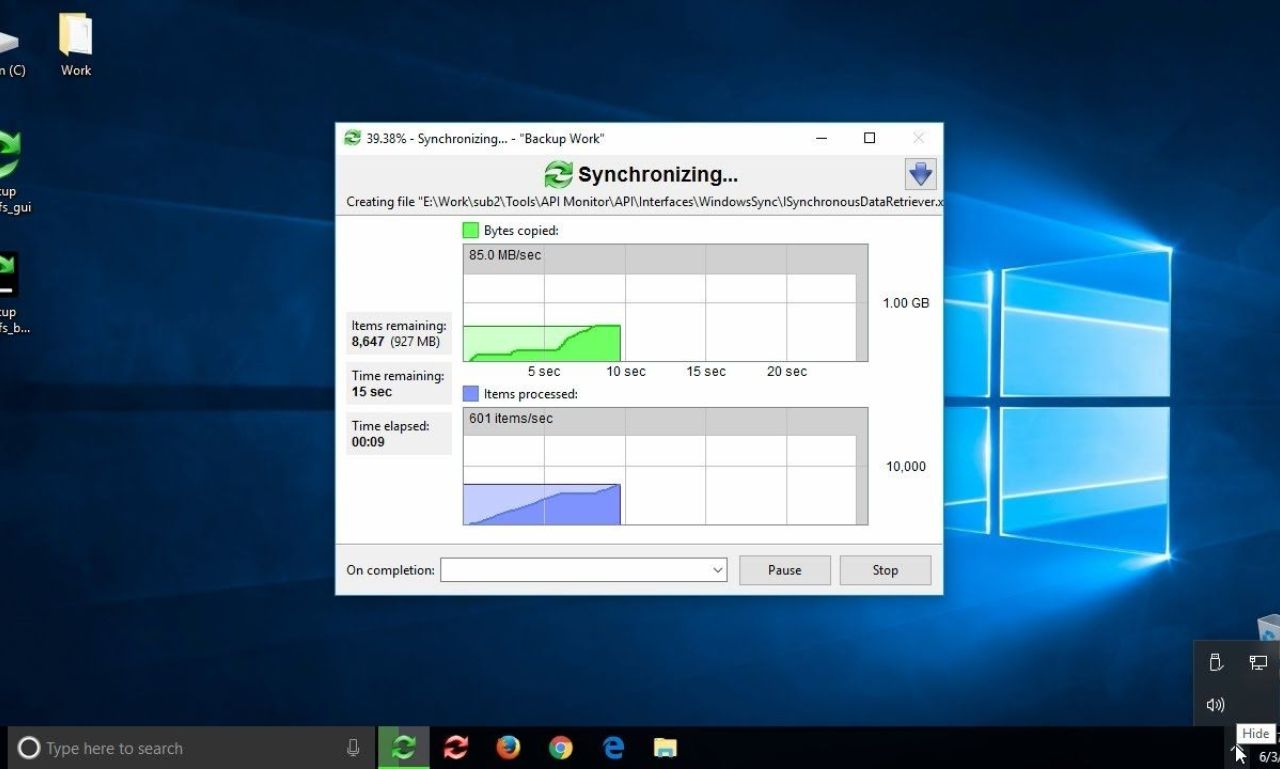Smooth out your data with two-way synchronization: enhance efficiency, ensure consistency, and boost collaboration across systems with seamless data integration.
In the present old age, information the board has become dynamically fundamental for associations and individuals the equivalent. The ability to access, update, and synchronize information across various stages reliably is head for staying aware of capability and proficiency. Two-way synchronization is a strong arrangement that tends to these necessities by guaranteeing that data is reliably refreshed across undeniably associated gadgets and applications. This article investigates the advantages, applications, and execution of two-way synchronization, featuring its positive effect on data the board and generally speaking proficiency.
Understanding Two-Way Synchronization
Two-way synchronization, generally called bidirectional synchronization, is a cycle that ensures information consistency between something like two structures. Dissimilar to one-way synchronization, which just updates data in one heading, synchronization permits changes made in any associated framework to be reflected across any remaining frameworks. This bidirectional progression of data guarantees that all gadgets and applications have the latest data, disposing of inconsistencies and upgrading data honesty.
Key Advantages of Two-Way Synchronization
- Enhanced Data Consistency: Two-way synchronization ensures that all associated frameworks have similar data, diminishing the gamble of irregularities. This is especially significant for organizations that depend on precise and exceptional data to pursue informed choices.
- Improved Efficiency: Via robotizing the synchronization cycle, 2 way synchronization wipes out the requirement for manual data passage and updates. This recoveries time as well as diminishes the probability of human blunders, improving in general efficiency.
- Seamless Collaboration: In a cooperative climate, 2 way synchronization guarantees that all colleagues approach the most recent data. This encourages better correspondence and coordinated effort, as everybody is working with similar dataal collection.
- Data Honesty and Security: 2 way synchronization keeps up with data respectability by forestalling data misfortune and defilement. Furthermore, it upgrades data security by guaranteeing that all updates are appropriately confirmed and approved.
- Flexibility and Scalability: 2 way synchronization can be executed across many gadgets and applications, giving adaptability to adjust to different business needs. It additionally scales well, obliging developing data volumes and growing framework combinations.

Utilizations of Two-Way Synchronization
Two-way synchronization has an expansive scope of utilizations across various businesses and use cases. Here are a few remarkable models:
- Business and Venture Arrangements: In the business world, two-way synchronization is fundamental for keeping up with consistency across different frameworks, like client relationship the board stages, undertaking asset arranging (ERP) frameworks, and human asset the executives apparatuses. For example, when an agent refreshes client data in the CRM framework, the progressions are consequently reflected in the ERP framework, guaranteeing that stock and request the executives are lined up with the most recent client data.
- Medical care: In medical care, synchronization assumes a vital part in overseeing patient records, arrangement timetables, and therapy plans. Synchronizing data between electronic wellbeing records frameworks and other clinical applications guarantees that medical services suppliers approach precise and state-of-the-art patient data, prompting better tolerant consideration and results.
- Internet business: Internet business stages depend on 2-way synchronization to oversee stock, requests, and client data across different deals channels. At the point when an item is sold on one stage, the stock levels are refreshed continuously across any remaining associated stages, forestalling stockouts and overselling. This consistent synchronization upgrades the client experience by guaranteeing exact item accessibility and request satisfaction.
- Money and Banking: In the money area, 2-way synchronization is utilized to keep monetary records, exchanges, and record data steady across different financial frameworks and monetary applications. This guarantees that clients have precise record adjusts and exchange accounts, while monetary establishments can keep up with administrative consistence and diminish the gamble of mistakes.
- Schooling: Instructive establishments benefit from 2-way synchronization by keeping up with consistency between understudy data frameworks, learning the board frameworks, and authoritative apparatuses. This empowers teachers to access state-of-the-art understudy data, track scholastic advancement, and oversee course materials really.
Executing Two-Way Synchronization
Carrying out two-way synchronization requires cautious preparation and thought of different variables to guarantee a fruitful combination. Here are a vital stages to direct the execution interaction:
- Characterize Data Necessities: The most important phase in carrying out 2-way synchronization is to characterize the data that should be synchronized between frameworks. This includes distinguishing the key data components, for example, client data, item subtleties, or monetary records, and deciding the recurrence of updates required.
- Pick the Right Apparatuses and Stages: Choosing the suitable instruments and stages for 2-way synchronization is pivotal for accomplishing ideal outcomes. There are different synchronization arrangements accessible, going from independent synchronization programming to coordinated arrangements inside existing stages. It’s critical to pick devices that line up with your particular prerequisites and proposition similarity with your current frameworks.
- Lay out Data Planning and Change Rules: Data planning includes characterizing how data components from one framework compare to data components in another framework. This guarantees that data is precisely synchronized between frameworks. Furthermore, change rules might be expected to change over data arranges or apply business rationale during the synchronization cycle.
- Carry out Validation and Safety efforts: Guaranteeing the security of synchronized data is vital. Carrying out vigorous verification and approval instruments forestalls unapproved access and data breaks. Encryption strategies can likewise be utilized to safeguard delicate data during transmission.
- Screen and Keep up with Synchronization: When 2-way synchronization is executed, it’s fundamental to persistently screen the interaction to recognize and determine any issues that might emerge. Standard upkeep, including updates and fixes, guarantees that the synchronization stays solid and productive.
- Test and Approve: Prior to sending 2-way synchronization in a live climate, careful testing and approval are important to guarantee that the synchronization functions as planned. This includes testing different situations, for example, data updates, clashes, and blunders taking care of, to distinguish and resolve likely issues.
Genuine Instances of Two-Way Synchronization
To delineate the positive effect of two-way synchronization, we should investigate a few genuine models where this innovation has been effectively carried out:
Model 1: Retail and Stock Administration
An enormous corporate store executed two-way synchronization to oversee stock across its actual stores and online deals channels. Preceding synchronization, disparities between available and online stock levels frequently prompted client disappointment because of wrong stock data. By synchronizing stock data continuously, the retailer had the option to give exact item accessibility data to clients, lessening occurrences of stockouts and overselling. This better consumer loyalty as well as expanded deals and functional effectiveness.
Model 2: Medical care and Patient Records
A medical services supplier incorporated 2-way synchronization between its EHR framework and different clinical applications, including lab results, imaging frameworks, and charging programming. This coordination guaranteed that patient records were reliably refreshed across all frameworks, furnishing medical services experts with a far reaching perspective on understanding history and therapy plans. The synchronization likewise smoothed out regulatory cycles, for example, charging and protection claims, by guaranteeing precise and ideal data refreshes. Accordingly, the medical services supplier had the option to convey better understanding consideration and work on functional effectiveness.
Future Patterns in Two-Manner Synchronization
As innovation keeps on developing, two-way synchronization is supposed to turn out to be much more modern and incorporated with arising patterns.
- Man-made brainpower and AI: The mix of computerized reasoning (simulated intelligence) and AI (ML) with 2-way synchronization can upgrade data exactness and prescient abilities. Computer-based intelligence calculations can examine synchronized data to recognize designs, identify abnormalities, and make data-driven suggestions, further developing direction and functional proficiency.
- Web of Things (IoT): The multiplication of IoT gadgets produces huge measures of data that require synchronization across various frameworks. 2-way synchronization can engage steady information exchange between IoT contraptions and central systems, working with progressing noticing, control, and motorization in various organizations, such as collecting, clinical benefits, and sharp metropolitan networks.
- Blockchain Development: Blockchain development offers a decentralized and secure method for managing information synchronization. By utilizing blockchain, associations can accomplish sealed and straightforward data synchronization across disseminated frameworks. This is especially significant in businesses that require elevated degrees of data respectability and security, for example, finance, production network, and medical services.
- Cloud Combination: As additional associations move to cloud-based arrangements, 2-way synchronization will assume a urgent part in coordinating on-premises frameworks with cloud applications. This ensures that information stays dependable and accessible across hybrid circumstances, engaging relationship to utilize the upsides of both on-premises and cloud developments.
Conclusion:
Two-way synchronization is a fantastic resource that streamlines information the leaders, further develops viability, and ensures information consistency across various structures and stages. Via mechanizing the synchronization interaction, associations can diminish manual exertion, limit blunders, and further develop joint effort. The positive effect of 2-way synchronization is obvious across different ventures, from retail and medical services to fund and internet business. As innovation keeps on propelling, the future of Two-way synchronization holds considerably more prominent potential with the coordination of simulated intelligence, IoT, blockchain, and cloud advancements.
FAQ’s:
- What are the essential benefits of two-way synchronization?
Key advantages incorporate upgraded data consistency, further developed effectiveness, consistent joint effort, kept up with data honesty and security, and adaptability and versatility across different gadgets and applications.
- Which enterprises can profit from two-way synchronization?
Ventures like business and undertaking arrangements, medical care, online business, money, and training can all profit from 2-way synchronization by keeping up with predictable and exceptional data across numerous frameworks.
- What are the moves toward execute two-way synchronization?
The means incorporate characterizing data necessities, picking the right apparatuses and stages, laying out data planning and change rules, carrying out confirmation and safety efforts, observing and keeping up with synchronization, and directing exhaustive testing and approval.
- What future patterns are normal in two-manner synchronization?
Future examples integrate the compromise of man-made cognizance and simulated intelligence, the development of Web of Things (IoT) contraptions, the use of blockchain advancement, and the rising gathering of cloud coordination.




